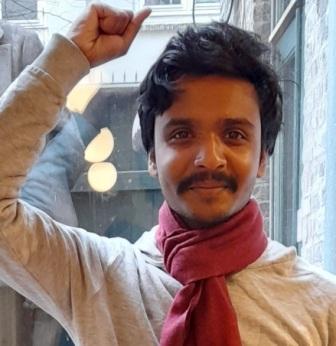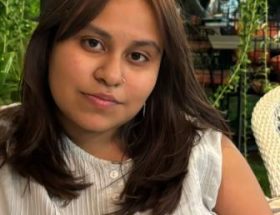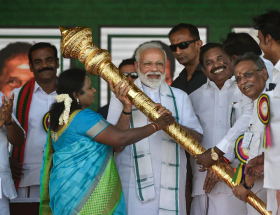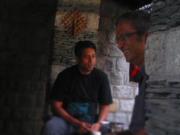Naveen Prasad Alex
The Vaikom Satyagraha (from March 30, 1924, to November 23, 1925) is well known as an anti-caste struggle in Kerala and has played a major role in the Kerala reformation movement. It was a historic anti-untouchability movement for access to the prohibited public roads around Vaikom Temple in the Kingdom of Travancore. The Kingdom of Travancore was known for its rigid and oppressive caste system. However, more than a century before this historic strike, in the 19th century, another historic yet tragic strike was fought by the Ezhava youth of the region for the right to enter the temple. Sadly, this heroic strike, known as the Dhalavakullam Strike or Dhalavakullam Kootakola, remains largely unknown. The Dhalavakullam Strike remains ignored by mainstream historic discourse, or such stories of cruel casteist atrocities and resistances are purposefully ignored by mainstream historians. In this article, I am trying to explore unknown facts about the forgotten Dhalavakullam Strike.
From the Sangha period on, Vaikom temple was a Buddhist vihara. Famous art historian Stella Kamrich says that the Gaja Prishta style of circles and three-quarter circles are symbols of the Buddhist Sangha periods. The Buddhist vihara was also the last one to survive, and by the middle of the 16th century, the vihara had converted into a Shaivite Brahminical temple. Even today, despite the Brahminization, the Buddhist tradition is still evident in the architecture of the temple. It can be said that the round sanctum of the temple is an evolution of mahastupa sculpture. Like anywhere else in India, following this, the DBA people of the region were labeled as Avarnas and were prohibited from even walking through the roads near the temple. As mentioned above, the Kingdom of Travancore was known for its rigid and oppressive caste system, and Avarana castes, including Ezhavas, Pulayas, Parayas, etc., suffered severe untouchability.
In 1806, more than 200 Ezhava youths from the north-east of Vaikom organized and made a public announcement that they were going together to worship at their place of worship, the Vaikom temple. As mentioned above, the temple was a worship place for former Buddhists turned Avarnas, who even lost the right to walk through the public roads near the temple after the Brahminization. A peaceful march was called for by the youth. Dalava Velluthampi, or the prime minister of Travancore, came to know about this. Dalava Velluthampi was known for his iron-fist policies. Dalava decided to curb this movement at any cost and sent a cavalry under the leadership of Pappanava Pillai and Kunhikutty Pillai, army chiefs of Travancore, to prevent them from entering the temple premises. The Ezhava youth assembled at the eastern side of the temple as prearranged and proceeded towards the temple. The Ezhava mass was completely unarmed and was confronted by the cavalry under the leadership of Kunjikutty Pillai. The youths were mercilessly chopped. Those who tried to escape were hunted down and killed. The houses of these youth were set on fire. More than 200 people were killed that day. The dead bodies and the wounded people were trodden down in the pond in the eastern courtyard of the temple. The pond is known as Dhalava kullam, or Dhalava’s pond. It’s said that Dalava Velluthampi directly gave orders to bury the dead and wounded youth in the pond. A folk song about this strike is famous among the Dalit communities of Travancore. The names of three martyrs of the strike are mentioned in the song, namely Kari Pannikar, Gurvaran Ammalan, and Kunnel Chenni. It’s also believed that another leader, Malu Thandan, escaped to nearby Cherthala, and his successors are still living there.
Several discussions and records of this strike can be found in the history of Vaikom or Kerala itself; however, later, it was systematically excluded from mainstream historic discourse. Several anti-caste socal reformers of Kerala, including Sree Narayana Guru, Kumaran Asan, T.K. Madhavan, and Sahodran Ayypan, have mentioned the Dhalavakullam strike. Kumaran Asan, during one of his public speeches, said that the martyrs of Dhalavakullam continue to inspire us to fight the caste system. The Dhalavakullam strike remains a very important part of the history of Kerala and the Kerala Renaissance movement, and it is important to remember these heroic martyrs in these times when Hinduvtva is gaining strength and Democratic Renaissance values are facing severe threat.
~
Reference
- Dalitbandu: The Christians of Vaikom and Dhalavakullam: Hobby Books 2006
~~~
Naveen Prasad Alex is a master’s student in biological sciences at the University of Turku, Finland. He has completed B.Sc Honours (Biological Sciences) from Krea University, India. He is a Junior Fellow of the New York Academy of Sciences and has authored two books in Malayalam. He has also published several research articles in different journals on ecology and biodiversity. He received Young talent award, Attumalil Geroge Kutty memorial Young Rising Scientist Award and My Tree campaign Award. He is also passionate about Anti-caste movements, Anthropology and politics.










